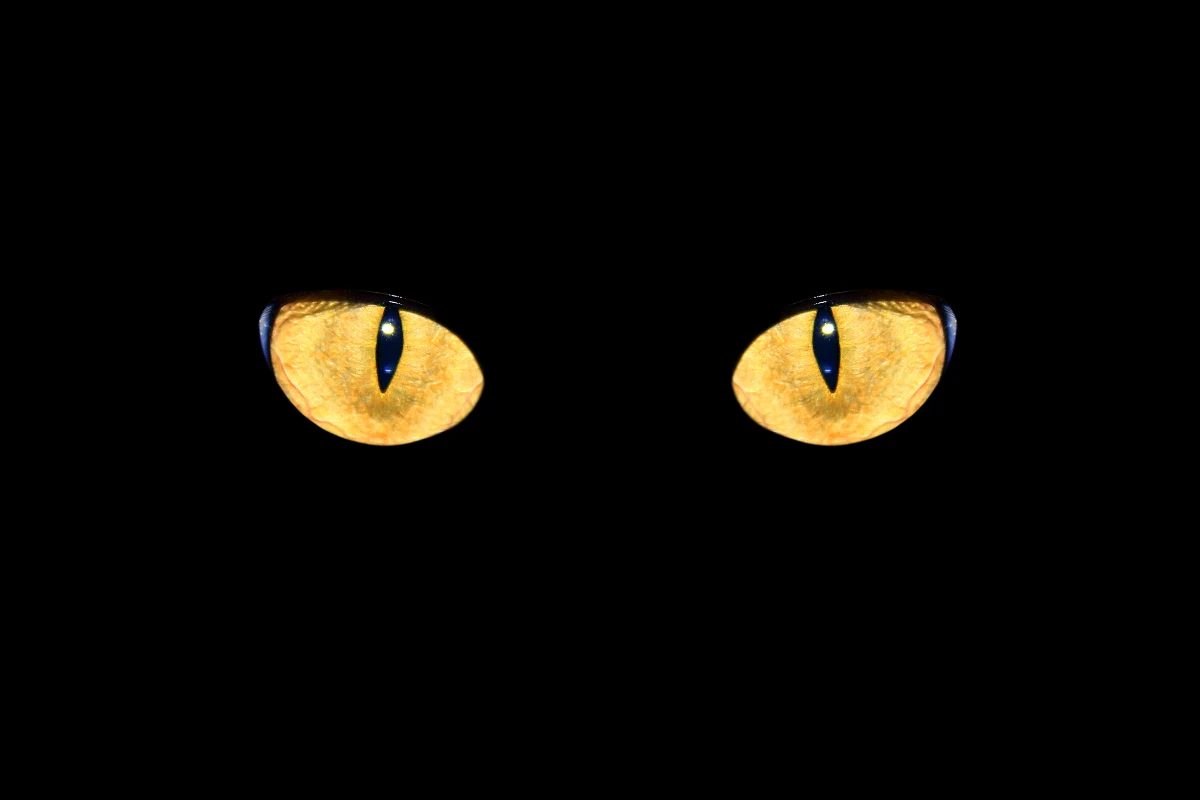Cat eye color is a unique and fascinating feature of our furry friends, ranging from brilliantly emerald green to soft yellow gold. The final eye color of your feline companion can tell us something about their genetic makeup, age, and health conditions.
Additionally, cats do not always have the same colored eyes throughout their lives; sometimes, they may change hues over time! In this blog post, we’ll discuss all you need to know about a cat’s eye colors, such as different types, factors that affect it, rare ones, and changes due to age or health problems.
Key Takeaways
- Cats have a variety of eye colors that may change depending on age, health condition, and exposure to light.
- Genetics play a role in determining an individual cat’s eye color. Certain genes, like the white spotting gene, contribute to unique phenotypes like two different colored eyes or heterochromia cases.
- Blue-eyed cats are caused by a lack of pigment (albinism), which can affect vision due to light refraction issues.
- Higher levels of melanin are responsible for gold/copper eyes. In contrast, hazel eye color is a mix of green and yellow, becoming rare across breeds, although it’s commonly found amongst wildcats such as bobcats or lynx.
Understanding Cat’s Eye Colors
Melanocytes, or melanin-containing cells, play an important role in determining a cat’s eye color and involve genetics and various environmental factors that can influence eye hue.
Genetics And Melanocytes
Genetics plays a crucial role in determining the color of a cat’s eyes. The amount and activity of melanocytes, which are specialized cells that produce melanin—a pigment responsible for eye color—vary greatly among cats.
These variations can lead to different colors within the same litter or distinct shades between two related cats. It is also known that certain genes, like the white spotting gene and white masking gene, contribute to unique phenotypes such as odd-eyed cats (cats with one eye of blue color and one eye of another color) or heterochromia circumstances where an individual occurs with two distinct colors in each iris, respectively.
Breeders typically consider these genes when pairing cats together for breeding to obtain unusual coat patterns or unique traits, such as multi-colored eyes on some cat breeds, such as Siamese Cats or Norwegian Forest cats.
Different Types Of Cat Eye Colors
Like us, cats’ eye colors are determined by their genetics and the level of melanin—an amino acid that helps regulate color. The amount of melanin affects the hue, with more melanin resulting in a darker pupil ranging from light lemon yellow to hazel to deep orange or brown.
Cat breeds have different baseline pigmentation, which can result in certain eye colors being more common amongst particular breeds than others – Siamese cats usually have bright blue eyes. At the same time, British Shorthairs tend to have vivid green eyes.
Believe it or not, there is a wide range of cat eye colors, including blue (rarer among adult cats), yellowish-green or amber-colored eyes (most commonly found on Bengal cats and other oriental breeds), golden lined yellow/orange eyes (commonly seen on Burmese felines), green gemstone-like hues with creamy highlights (often on Norwegian Forest Cats) and deep shades of copper that sparkle in sunlight (typical for Electric Persian).
Cats With Blue Eyes
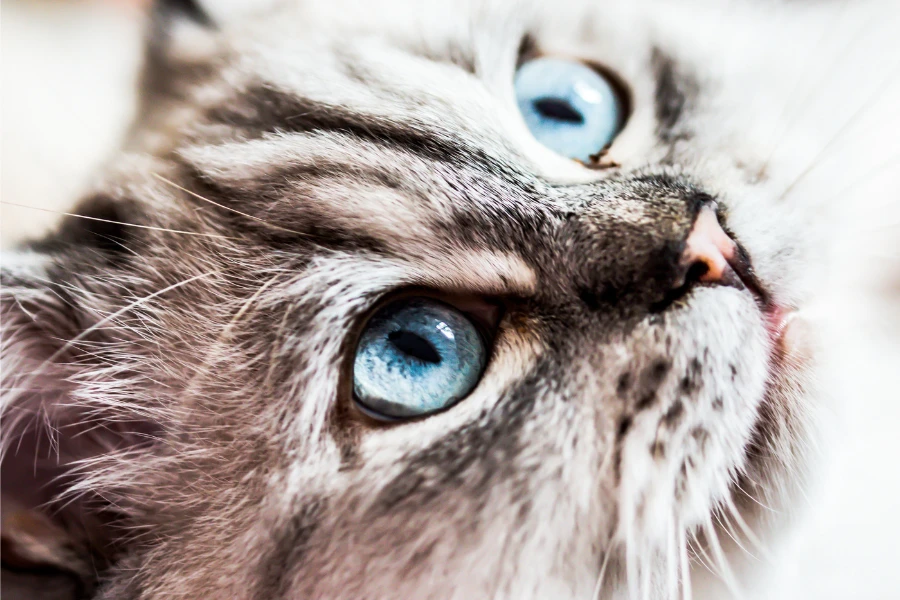
Blue eyes in cats are caused by a lack of pigment, called albinism. This gene can affect the color of their fur, skin, and eyes.
The absence of melanin affects cats’ vision because it creates a problem with light refraction, impacting how they focus on objects. However, this deficiency doesn’t lead to total blindness but decreased visual acuity and poor depth perception, especially at night or if there isn’t enough light intensity.
Cats With Yellow Eyes
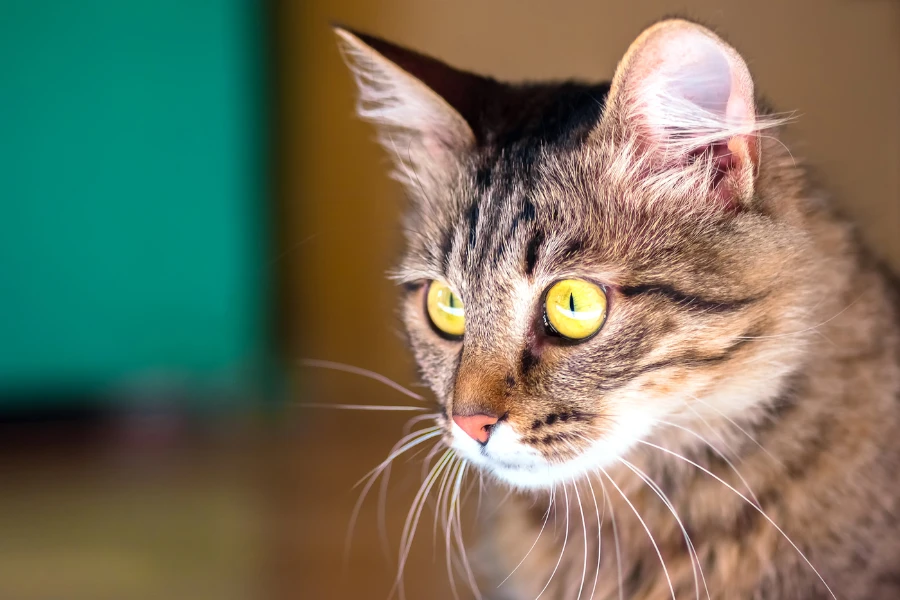
Cats with yellow eyes come in many shapes, sizes, and breeds. This eye color is caused by melanin in their iris, which gives them a characteristic golden-yellow hue.
It can occur alone or as part of an orange base coat color to make an almost peach shade. Interestingly, these cats have low amounts of melanin compared to other cats with yellower coat hues, such as tabbies or tortoiseshells, giving their fur a muted leathery appearance but vibrant eyes that will shine brightly against light backgrounds.
Cats With Green Eyes
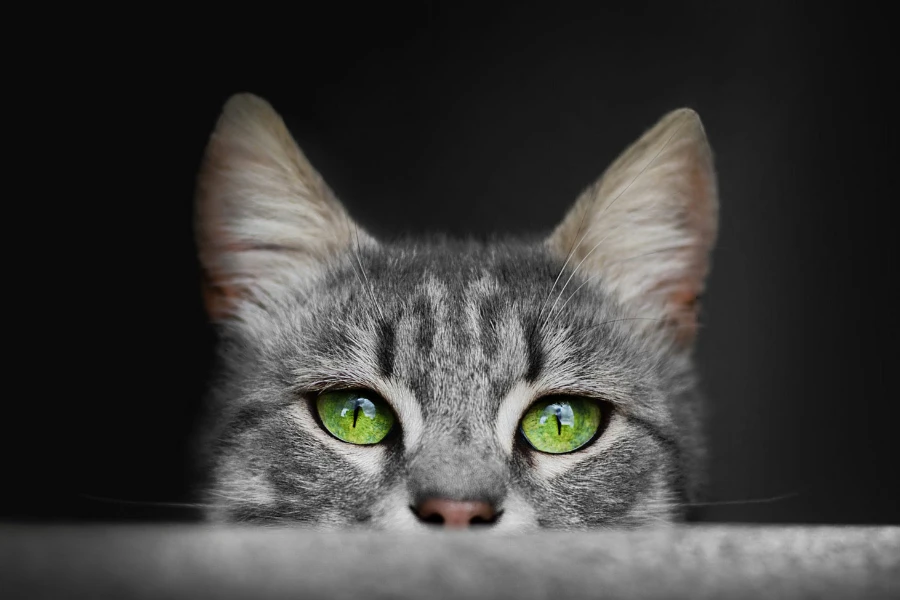
Green eyes in cats are a beautiful and captivating feature. The color of these cat’s eyes can range from light jade to dark emerald, with possible hints of blue or yellow depending on the number of melanocytes in the iris.
Understanding eye colors in cats is closely related to genetics, just like their coat colors. In other words, two well-known genes (B & D) determine what kind of pigments are produced, resulting in a spectrum that can go from golden tones like yellow through intense and vibrant hues like copper up until plain steely blues or greens, as mentioned previously.
Cats With Orange Eyes
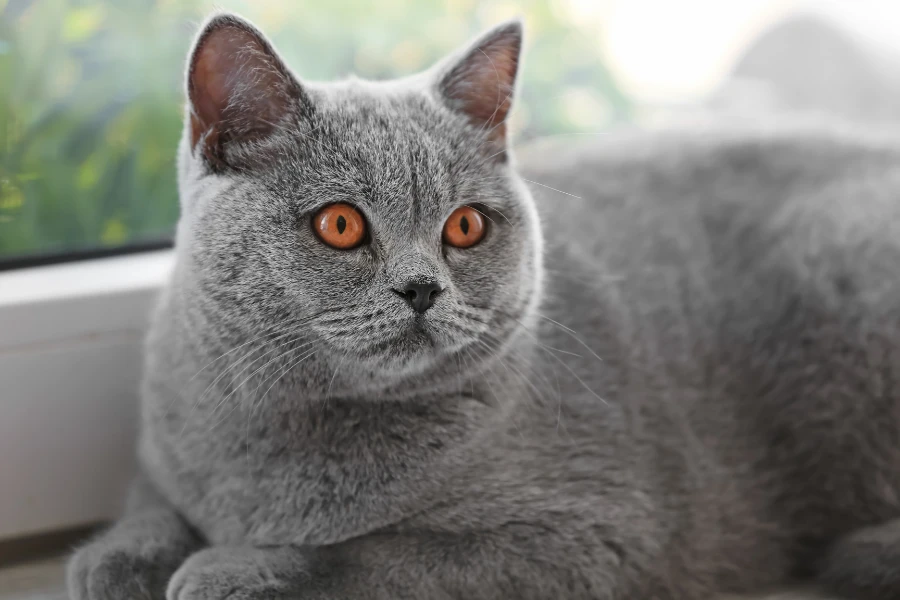
Are you a cat owner who has noticed the beautiful and unique orange eye color in your furry friend? Orange eyes come from low melanin levels in the iris, making it much more common than other colors.
Cat breeds that may have orange eyes include the Maine Coon, Japanese Bobtail, Devon Rex, American Wirehair, and Turkish Van cats. The amount of melanin produced by cats determines how dark or light their eye color will be: less melanin means a lighter shade, such as lemon yellow or bright orange hues, whereas greater amounts of this pigment yield hazel to deeper colors like an intense copper-brown tone.
It is important to note that although some believe that fish can change a cat’s eye color from blue to green or gold through diet, this is false! All kittens are born individuals with completely blue eyes, but as they age, their true natural colors begin turning up according to genetics, not what they’re fed.
Suppose a feline’s eyes show darker pigmentation under source lights. In that case, it simply indicates the higher activity of these cells, which produce more melanin for intensified hue shades giving the appearance of changing color under different lighting conditions.
Therefore, when indoor house pets gain sun exposure for healthy doses at regulated periods alongside adequate hydration and nutrition sources may bring forth stronger vibrancy of hues around their orbs, thus deepening its clarity and saturation whenever needed thanks to appropriate environmental contexts while avoiding damaging glares over prolonged durations out in direct sunlight without protective gear on.
Cats With Gold Eyes
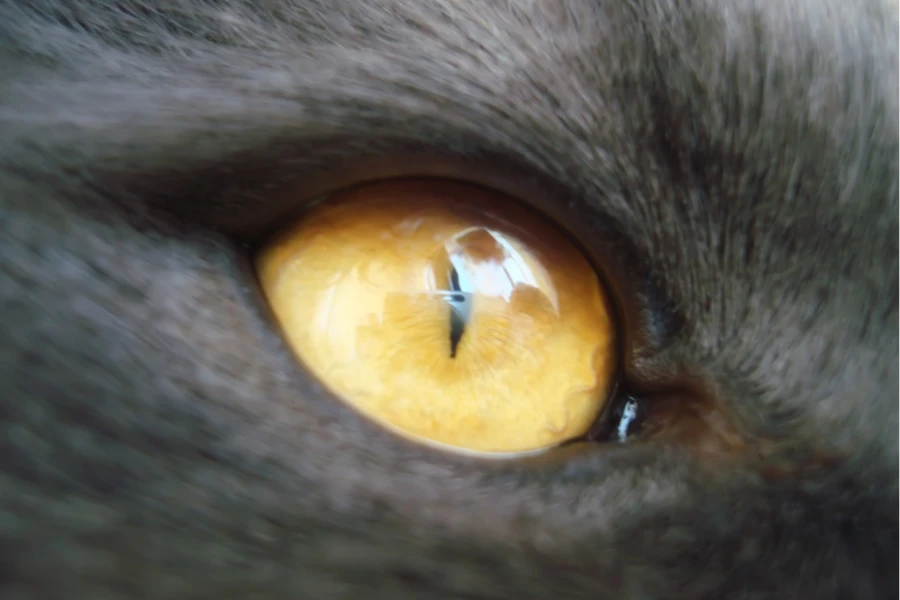
Gold eyes in cats are a rare and beautiful color, but also one with potential health concerns. Gold eye color is caused by higher levels of melanocytes, the cells that produce pigment in their bodies.
This means the eyes of certain breeds like Burmese are generally more likely to be gold due to genetics; however, any cat can show this curious and attractive eye sparkle if they have high amounts of melanin-producing cells.
While these bright golden eyes may add character to your furry friend’s face, owners must pay attention to signs of inflammation or pain due to increased pressure on the sensitive parts of their iris.
Furthermore, since light reflects differently from this kind of iris color, there have been cases where gold-eyed cats experienced blindness due to glare sensitivity which can be dangerous without proper precautionary measures taken on an owner’s behalf, such as shielding them from direct sunlight when necessary or using special sunglasses made specifically for pet use during outdoor activities.
Cats With Brown Eyes
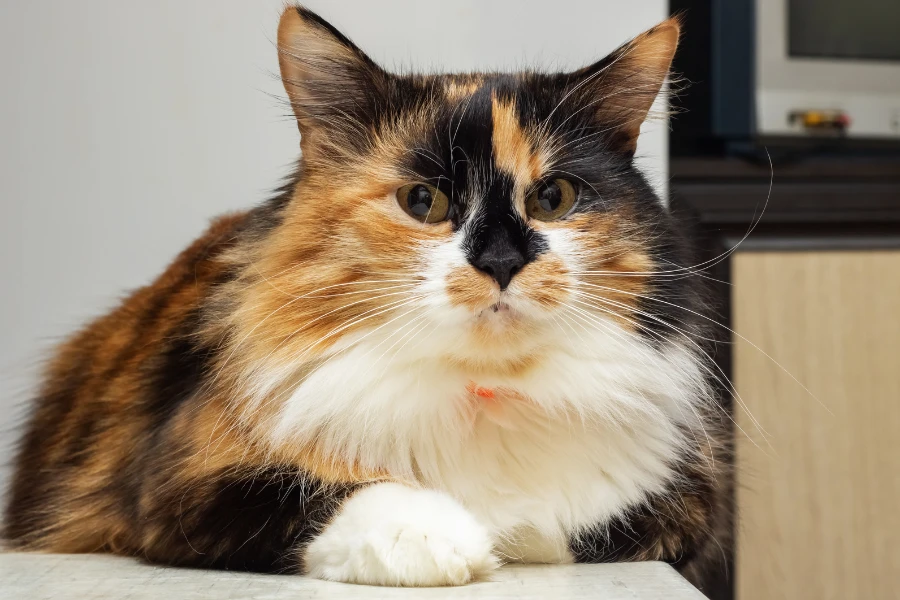
Brown eyes are a very common eye color in cats. This hue can range from light yellow-brown to deep copper, depending on the amount of melanin found in the iris of their eyes.
Cats with brown eyes contain more melanocytes (cells containing dark pigment) than other eye colors, making them appear darker. Genetics also play a role in determining how much and what type of melanin will be present in a cat’s eyes; this means that specific breeds may have higher instances of deeper-colored brown-eyed cats than others.
Some cases, such as white cats who later develop chocolate or golden brown eyes, can be attributed to either migration of previously hidden cells or activation due to external factors such as age and sunlight exposure.
Brown-eyed cats tend to stand out during nighttime hours due to the reflectivity caused by their high levels of pigmentation. This trait makes it easier for owners to locate if they become lost at night or require medical attention after dark hours.
Cats With Copper Eyes
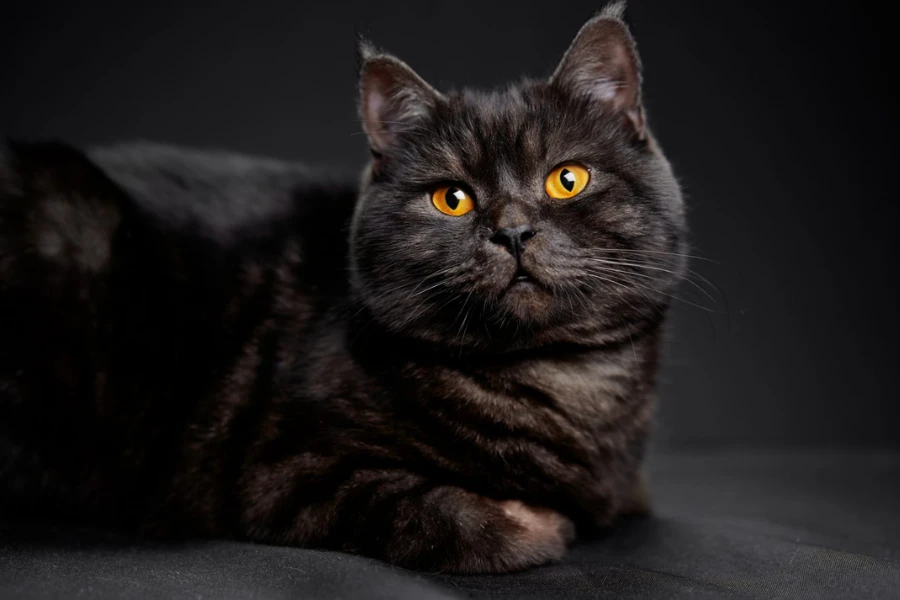
Copper-colored eyes are the rarest type of eye color among cats. It is a rich, dark copper color that is almost black in dim lighting. Copper eyes are mostly found in British Shorthair and Bombay cats, where it’s considered part of the breed standard for Bombay due to their association with their characteristic sleek, glossy fur coat.
The mysterious copper eye color on this breed was likely an unintended mutation from originally naturally occurring blue eyes, which may happen due to lower melanin production than other darker colors associated with high pigment jackets.
Copper eyes have less red properties than lighter shades such as yellow or amber since copper contains more intense melanin levels, leading to a naturally deep colored hue.
Some solid white or predominantly white cats might also have copper eye colors; however, orange and other deep dark purples and blues remain very uncommon, while unique combinations like a single green or gold may occur alongside one solid orange iris, although there could be health implications linked specifically caused by this level of density in pigmentation within the tear film which should always be checked out.
Cat owners must take extra care when monitoring their cat’s living environment so they do not become prone to external sources that contribute, such as too much direct sunlight exposure, which can lead to changes in pigment intensity and, therefore, potentially cause harm within the cornea itself if unaddressed long term.
Cats With Hazel Eyes
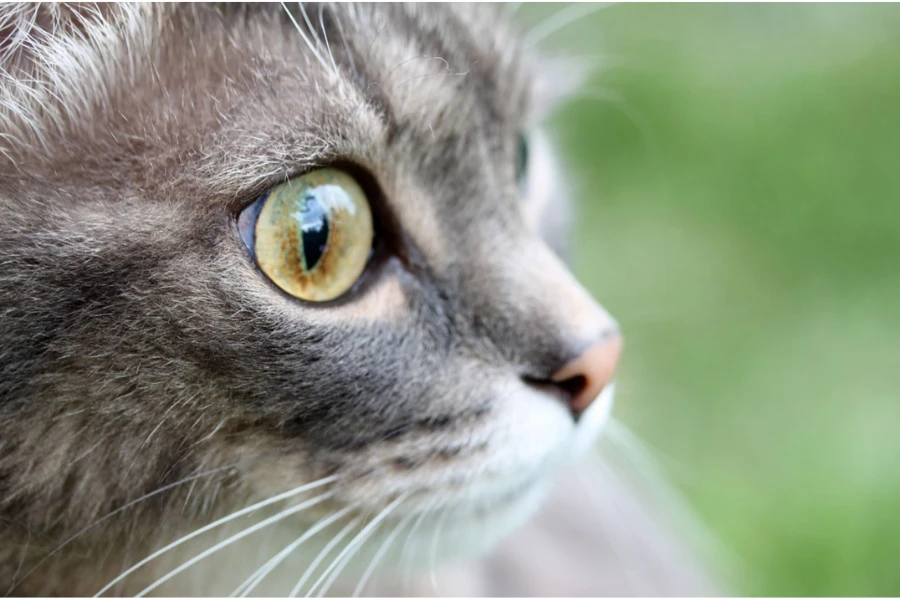
Hazel eyes are a mix of green and golden yellow, making them one of the rarest eye colors in cats. These eyes may appear differently depending on environmental factors such as lighting, moods, or age.
While not observed often in domestic cats, wildcats like bobcats and lynxes typically have hazel eyes. Breeds prone to having this eye color include Bengal and Cornish Rex cats; however, they can also be seen in other breeds.
Like humans, these hues show because of genetic composition inspired by melanin – a pigment produced by melanocytes that also influences coat color. Factors affecting eye hue include sun exposure, diet, and health conditions, meaning that both parents sometimes carry genes for disposing of different colored eyes. Still, environmental factors play a role in final development, or changes afterward happen gradually due to aging.
Cats With Different Eye Colors
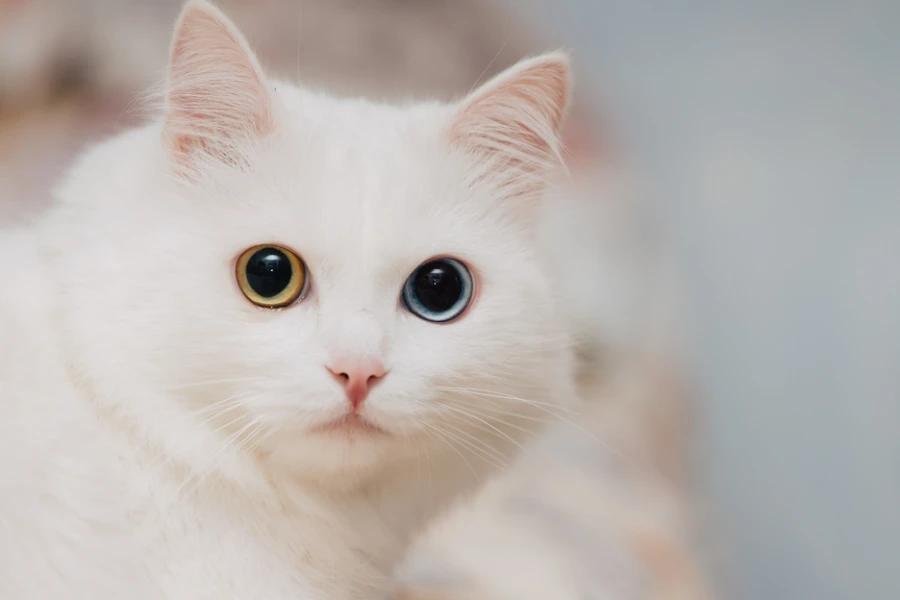
Generally, cats have eyes ranging from yellow and orange to green, blue, and even copper. While this may seem surprising due to the stereotype of a “cat with two green eyes,” many cats are born or change their eye color to different hues beyond green or brown.
It all depends on genetics and what kind of melanocytes (pigment-producing cells) can be found within the cat’s iris. For example, some cats are born with blue eyes, usually belonging to certain breeds such as Siamese or Himalayan.
Over time, those blues will either stay put if there isn’t enough pigment coming through for any other colors or gradually turn into yellows, oranges, and greens, depending on how active the melanocytes are in response to exposure from light sources like UV rays present in sunlight.
Factors That Affect Cat’s Eye Color
A cat’s eye color can be influenced by numerous factors, such as genetics, age, health conditions, and external influences (e.g.
Age And Health Conditions
Cats’ eye color is generally determined by the amount of melanocytes or pigment cells in their eyes. However, as cats age, their eye color can change as melanocytes break down or deteriorate due to aging and health conditions such as cataracts, glaucoma, and uveitis.
Symptoms of these medical issues include changes to pupil size, shape changes, and cloudiness; both signs could indicate a serious problem requiring immediate veterinary attention.
Cat owners should regularly monitor their pet’s eyes for any changes that could be signals of an underlying health condition: keep an eye out for variances in color between one side and the other (often caused by stray light), discoloration in the fur around the edge of the iris, unusual pupil shapes or sizes—or any sudden changes from its habits like reduced/irregular activity at night.
External Factors Such As Sun Exposure
Sun exposure can have a big impact on a cat’s eye color. The amount of UV radiation a cat is exposed to influences its melanin levels. Melanin, or pigmentation in the eyes, controls the colors cats develop; more amounts mean darker colors, such as browns and coppers, while less leads to lighter colors, like blues, yellows, and greens.
Too much sun without protection can lead to solar damage and may cause harm to your cat’s eyesight. To help maintain healthy eye color for your kitty, always wear protective eyewear outside during daylight hours or shelter them from direct sunlight whenever possible.
Changes Due To Mood Or Lighting
Cats’ eyes can change color due to several factors, such as mood, lighting, and even age. Generally, if the cat is happy and contented, its eyes look bright.
However, when the animal is angry or feeling threatened by something, the effect can be visible with small changes in iris pigmentation- its eye color becoming slightly darker.
Additionally, lighting also affects how we perceive a cat’s eye colors. Although it may not physically change them completely, objects near your cat might create refraction that shifts their color’s intensity and/or hue in photos.
To avoid this effect, use natural light for pictures rather than flash photography, making amber eyes appear yellowish instead of golden tone.
Rare And Unique Cat Eye Colors
When both eyes have a different color or hue, cats with heterochromia are some of the rarest and most unique cats around.
Dichromatic Eyes And Their Meanings
Dichromatic or dichroic eyes refer to two distinct colors in a cat’s eyes. This rare eye color is caused by different levels of melanin pigment in their iris, which results in a combination of two hues within their eyes.
Dichromatic eyes are most commonly seen among white cats and can have several combinations, with popular examples being hazel/blue or green/yellow-orange. The intensity of the coloring will vary from cat to cat and depending on lighting conditions and moods, making for an even more unique form of eye color.
One intriguing aspect about this rare colored feline is the various meanings associated with each combination seen particularly amongst breeders – kittens may have dichromatic eyes if they hold grudges, feel strong emotions such as love or joy, loyalty towards family members or other family pets, etcetera.
Cat owners should take extra care when dealing with these beauties by watching how much exposure they get to sunlight since it could harm their delicate retinas; regular check-ups would do wonders, too, as abnormalities in appearance may indicate some underlying medical issues such as problems with pigmentation due to albinism.
White Cats With Multi-colored Eyes
White cats with multi-colored eyes are truly a sight to behold. This unusual trait is caused by an interaction between the two genes that control eye color, W and G. The gene responsible for white fur – W – masks or reduces the development of melanin in cats’ irises, resulting in light-colored eyes such as blue, gold green, and copper.
This phenomenon may occur when one copy of the gene controlling the production of melanin (G) continues working while another has been affected by the white spotting gene (W).
As a result, half of each eye will have some color, while the other contains none. Depending on which parts contain color variations from amber yellow to vivid greens, this delightful mix gives these majestic felines their unique appearance.
When caring for your gorgeous polychromatic cat’s eyes, there are certain precautions you should take as per usual cat care protocols; this includes regular cleanings with veterinarian-approved products since these magical creatures tend to attract quite a lot of dirt due to their flashy coats! Additionally, watching changes in behavior or general health might indicate harsher issues affecting vision – careful observation could prevent further harm.
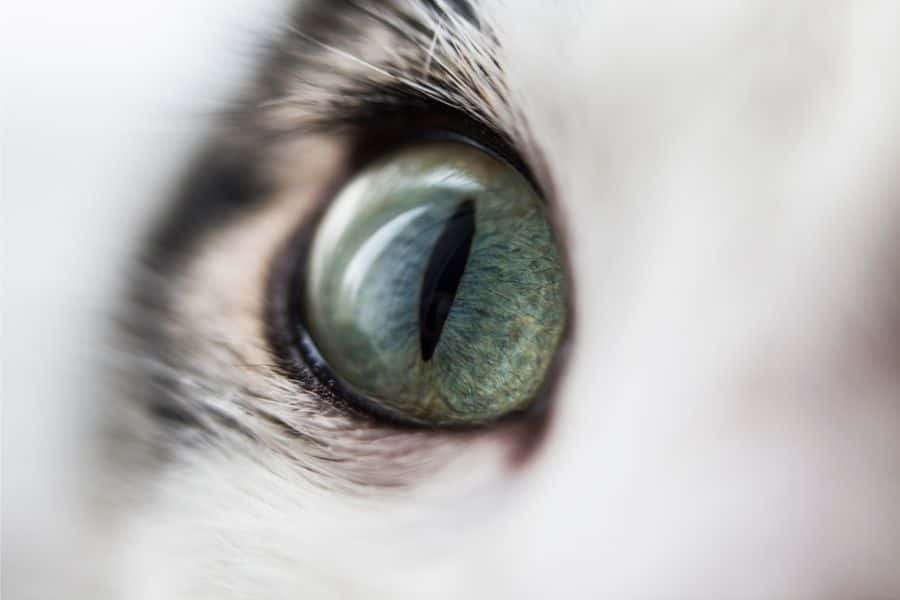
Eye Color Changes In Cats
Cat eye color changes due to age, health conditions, external influences, and other factors.
Normal Changes Due To Aging
As cats age, the color of their eyes may change once or even multiple times. A common condition in older cats is lenticular sclerosis, where the lens becomes cloudy and slightly bluish.
This usually does not affect vision significantly; however, sudden changes in eye color can also be a sign of underlying diseases such as glaucoma, which must be addressed by consulting a vet immediately.
Owners should cautiously observe changes from blue, yellow, or green pigmentation to hazel and brown tones, tracking them over time with close observation.
Routine veterinary examinations for aging cats help ensure that any abnormalities are identified early and treated accordingly to avoid further complications.
Abnormal Changes That Indicate Health Issues
Abnormal eye color changes in cats can often indicate a potential health problem. Cat owners should note any sudden or dramatic shifts in their eye color, as this could indicate something is wrong.
Common diseases such as conjunctivitis and glaucoma can cause a shift in eye color from normal black or brown to red, grayish-blue, or yellow. In extreme cases, it may even go from one color to another – for example, blue to yellow.
Cats with albino genes are also susceptible to having lower melanin levels, making the eyes appear bluer than usual. If you notice these changes in your cat’s eyes, bring them immediately for professional medical care, as these conditions require prompt treatment.
How To Care For Your Cat’s Eyes
It is important to take good care of your cat’s eyes, and there are a few steps you can take to do so. Regular grooming is essential in preventing debris and bacteria buildup around the eyes.
Use a damp cloth or gentle eye wipes designed for cats to ensure you don’t press too hard against their delicate eyelids. This will help clear away any dirt or discharge from the corners of their eyes that could cause infection or irritation.
Keep an eye out for signs such as squinting, rubbing at the face with paws, swollen eyelids, redness, or excessive amounts of discharge – these may indicate serious medical conditions requiring immediate veterinary attention.
Also, keep track of changes in your cat’s eye color: kittens are usually born with blue eyes, which can gradually change to different shades like yellow and brown as they mature – however, if adult cats’ eye colors suddenly change, it could signal health problems and should not be ignored.
Conclusion
The eye color of cats is determined by the amount of melanin they have in their iris. This pigment can come in various colors, ranging from blue and yellow to hazel, green, orange, gold, and brown.
Genes also play a role in determining an individual cat’s eye color. Age and health conditions, sun exposure, and lighting will change a cat’s eye color.
Some rarer cases are seen with two-colored eyes (dichromatic) or multi-colored eyes (trichromatic). Abnormalities such as cloudy eyes may indicate health issues, so pet owners need to monitor their cat’s eye health for abnormalities or changes in hue.

